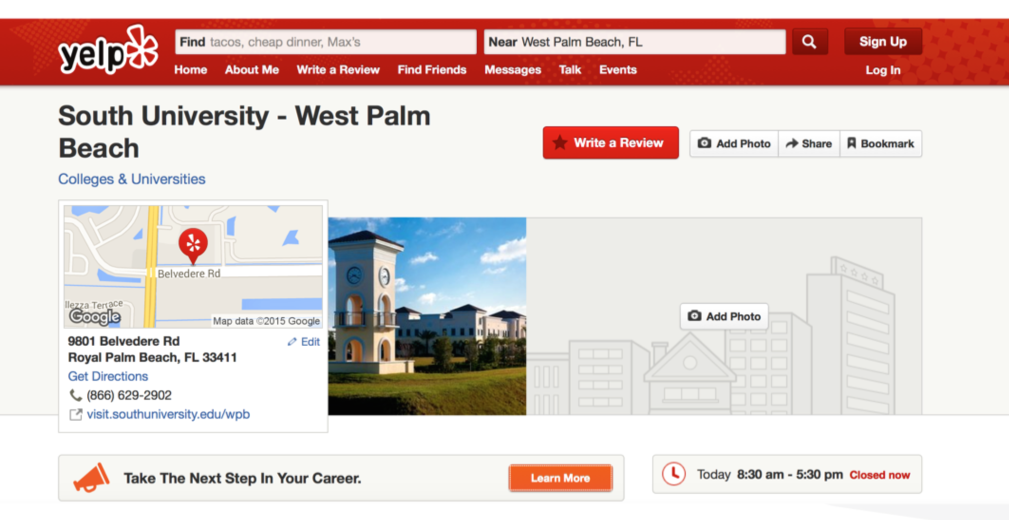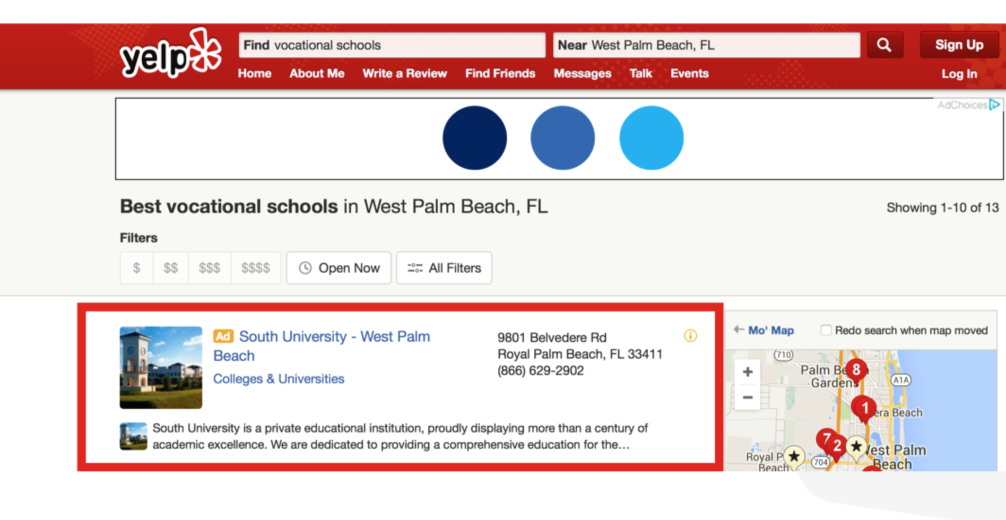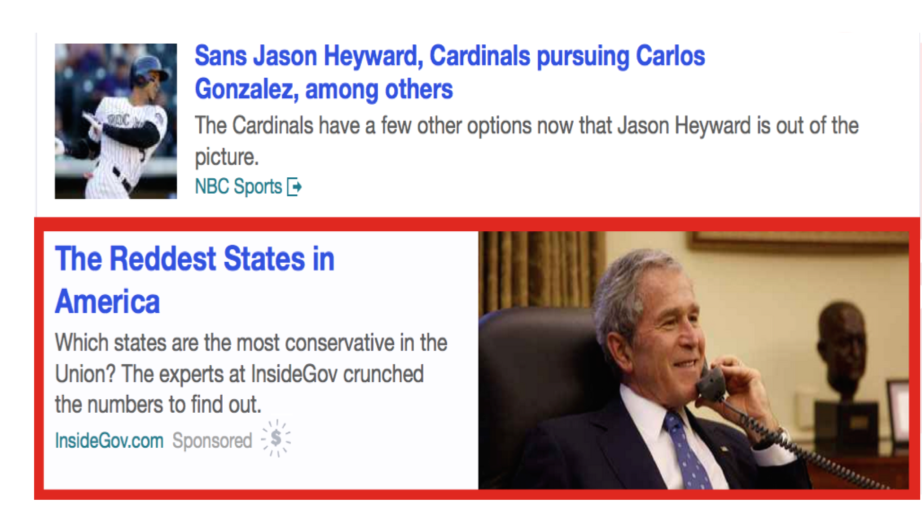A theme that I’ve been harping on over the past few months is that people are spending more time online than ever before and visiting an ever growing number of online destinations before making the decision to convert. This shift in user behavior means we must expand our reach beyond Google and Bing. If people are spending their time on other platforms and online sources, then it’s our responsibility as paid search marketers to expand our program’s scope and reach.
Today I’m going to talk about different platforms we can advertise on outside the Google and Bing marketplaces. As paid search becomes more competitive than ever, it’s more important than ever to find new places to advertise.
Yelp
Yelp Ads is an effective way to expand your paid search reach. Yelp Ads provides the ability to market locally, regionally, or nationally. Ads appear on the top of search results and on competitor pages. Yelp Ads are designed in such a way to drive both user engagement and direct response.
Take a look at the images below. The screenshots provide insight on how Yelp works from a marketing standpoint. Customers can engage through the ability to write reviews, share the business page with others, or the option to get directions to a business’s physical location. Customers can convert through the ability to click through from the Yelp business page to your business’s landing page and to provide a phone number so customers can call you directly.
How To Implement
Yelp is pretty easy to set up since you can work directly with one of their reps. Below is the information needed to get started.
- Fill out one of Yelp’s standard upload sheets. The upload sheet needs to contain location names and phone numbers for your business and destination URL’s for action links on the business page.
- A business page is required. All traffic from Yelp Ads has to route through this page. Yelp does not provide the ability to market directly to your landing pages. Yelp sets this page up so all you have to do is provide the necessary content.
- Provide any call to action messaging you think is appropriate for your Yelp business page.
- Bids amounts. Average cost per click estimates are provided by Yelp. If you provide Yelp your maximum bid, they will load it up to their system.
- Inform Yelp of the business category that best matches your business. You want to provide Yelp the closest category match to your business so it properly appears in the search results. Yelp’s targeting is based on categories, not keywords.
Yahoo Gemini, Also Known As Yahoo Stream Ads
Another platform that supplies both a healthy amount of engagement and conversions are Yahoo Stream ads. Yahoo Stream Ads is a form of advertising called ‘native advertising’. The premise of native advertising is the ads have the same look and feel as the content within the feed itself. The only difference between a Yahoo Stream Ad and the content feed is the ad says ‘sponsored’ at the end of the advertisement. Yahoo Stream Ads have a high engagement rate because of the native look and feel and the content is highly shareable.
Setting up Yahoo Stream Ads is fairly straightforward. You will need images for your ads but other than that collateral, the setup works along the following lines.
- Divide your campaigns by theme just like you would a typical Google/Bing campaign.
- Create ad groups under your campaigns. The best way to set up your ad groups is by ad size and device. Setting up your ad groups in this manner provides a high level of transparency into what ad sizes are performing well and what’s under performing.
- Finally, you’ll want to create your ads. You can create multiple versions of ads so you can test combinations of images and ad messaging.
Targeting is category based. Use Yahoo’s category structure and assign your campaigns to them accordingly. Ads will show up in results based upon the category chosen for your campaigns.
Geo-Fencing
I’ve recently started working with a company called UpSnap. UpSnap offers ‘geo fencing’ services. Geo-fencing is essentially GPS targeted mobile advertising. This ability to target according to GPS coordinates provides the flexibility to target specific locations within a geo. For instance, I manage an education client so instead of just blanket targeting a circle radius of 25 miles, I can target key points within a specific geographical region where prospects may be. For instance, I can target key areas such as the local high school, unemployment office, hospital (for nursing students) and other relevant locations.
When using geo-fencing as a marketing tactic, have a solid understanding of your overall goals and objectives. For instance, if your geo-fencing initiatives are not directly converting, be sure to have the tracking in place with your provider to view assisted conversions. Tracking assisted conversions will help determine if geo-fencing is contributing through attribution. Not all traffic needs to convert on a direct basis. However, all traffic needs to at least contribute to a conversion.
Final Thoughts
The paid search marketplace has become more competitive and expensive than ever before. Now that Google’s removed right side ads, it’s expected that this trend will only continue. Coupled along with users visiting an ever-increasing amount of sources prior to conversion, it’s essential to expand our stakeholder’s paid search reach and exposure.
Expanding reach to networks outside Google and Bing will reach potential customers where they are conducting their research and considering your services. Casting a wide net will increase engagement, improve the chances for conversion, and make your paid search program more efficient.








